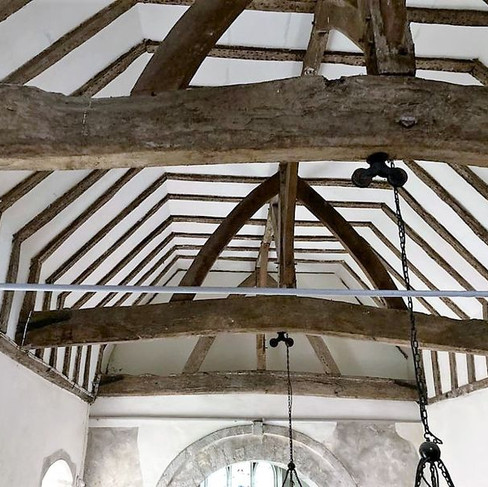WALKING THE MEON VALLEY TRAIL
- Kate
- Mar 19, 2022
- 3 min read
Updated: Mar 20, 2022
A 10 mile trail fashioned from an old railway line in Hampshire, the Meon Valley Trail offers both scenery and historical interest for the Slow Traveller. The trail runs between two charming villages in the South Downs, West Meon and Wickham, and includes some sites of historical interest as well as beautiful views over the surrounding countryside.

The Meon Valley is intrinsically an attractive area. In the 5th century the Saxons arrived here, the Meonwara tribe giving their name to this location. Over seven centuries they developed the area as a fertile valley, leaving their mark here on the landscape – and particularly in what is one of the best preserved Saxon churches in England.
The Meon Valley Railway Line opened in 1903, originally transporting local livestock and agricultural produce. Five of the navvies who died in the completion of the line still lie in the churchyard at West Meon, their stones simply bearing the inscription “Navvy huts, West Meon”. There were plans to develop it as a tourist link to the South coast but the expected tourists did not arrive and the line was closed in 1955. Now it has been redeveloped as a recreational trail for dog walkers, cyclists, joggers, horse-riders and carriage drivers.
Visitors can start at either end of the trail and walk or cycle a stretch of the 10 miles between the pretty villages of Wickham and West Meon. However, I recommend, should you be on wheels and plan to cover the whole 20 miles, and not be desperate to stoke up either your mileage or your fitness, that you begin by going south to north then back again. The gradient, slight though it is, will then definitely be in your favour on the way back.
It's a pretty and tranquil route. You cycle through a tree-lined avenue, under ivy covered bridges, past bucolic scenes of grazing cows and cropped fields, at times running close to the river which flows lazily among the trees. The Meon is fed almost entirely by spring water rather than rain and its alkaline waters are crystal clear. There is a chance that you might see otter, brown trout or kingfishers, and water voles have relatively recently been returned to the banks.
There are many access points to the trail and places where you can dive off for refreshment or a point of interest. Of particular note is the little Saxon church at Corhampton. Its history is fascinating – it’s built on a man-made mound which may well have been heathen or Roman in origin.
Corhampton Church
It is known that St Wilfred spent time among the West Saxons in the 7th century and Warnford, a mile away, was perhaps his headquarters. By 1000 Christianity was well established and the Saxons built some stone structures; this little church probably dating from the first quarter of the 11th century. It’s constructed of whole flints – which were local and cheaply available, strengthened by stone shipped up the Meon from the Isle of Wight.
Outside is a very ancient yew tree – its girth suggesting that it was planted about 1000 years ago. To the right of the porch is a very rare Saxon sundial in reddish brown stone which may even predate the building. The most striking feature is the wall painting in the Chancel, probably dating from the mid 12th century.
They show the legends associated with St Swithun, the 9th century Bishop of Winchester. St Swithun was inspecting the building of a bridge over the Itchen. An old woman was jostled in the crowd and her basket of precious eggs dropped to the ground. St Swithun returned them to her, unbroken. (You can find out more about St. Swithun at Winchester Cathedral, of which he is the Patron Saint.)
The painting, and the lozenge border below it are in bright red and green, astonishingly vibrant considering the 900 years that have passed since the painter chose his colours to represent the story.
Droxford Station
The trail passes the spot at Droxford Station where, in a carriage on a secret siding on June 2nd 1944, Winston Churchill met General Eisenhower, General Charles de Gaulle, the Canadian leader, President McKenzie King and the South African leader Jan Smuts to discuss the final preparations for D-Day. The station itself is no longer there and the building has been converted into a private house but the woodland around shows how secluded and hidden the spot must once have been.
At either end of the trail – at West Meon and at Wickham - there is free parking, so you can happily take the whole day to explore the trail if you wish.
If you enjoy the easy walks along disused railway lines, try the Castleman Trail in the New Forest, or the Breamore Railway Walk, also in Hampshire.




















